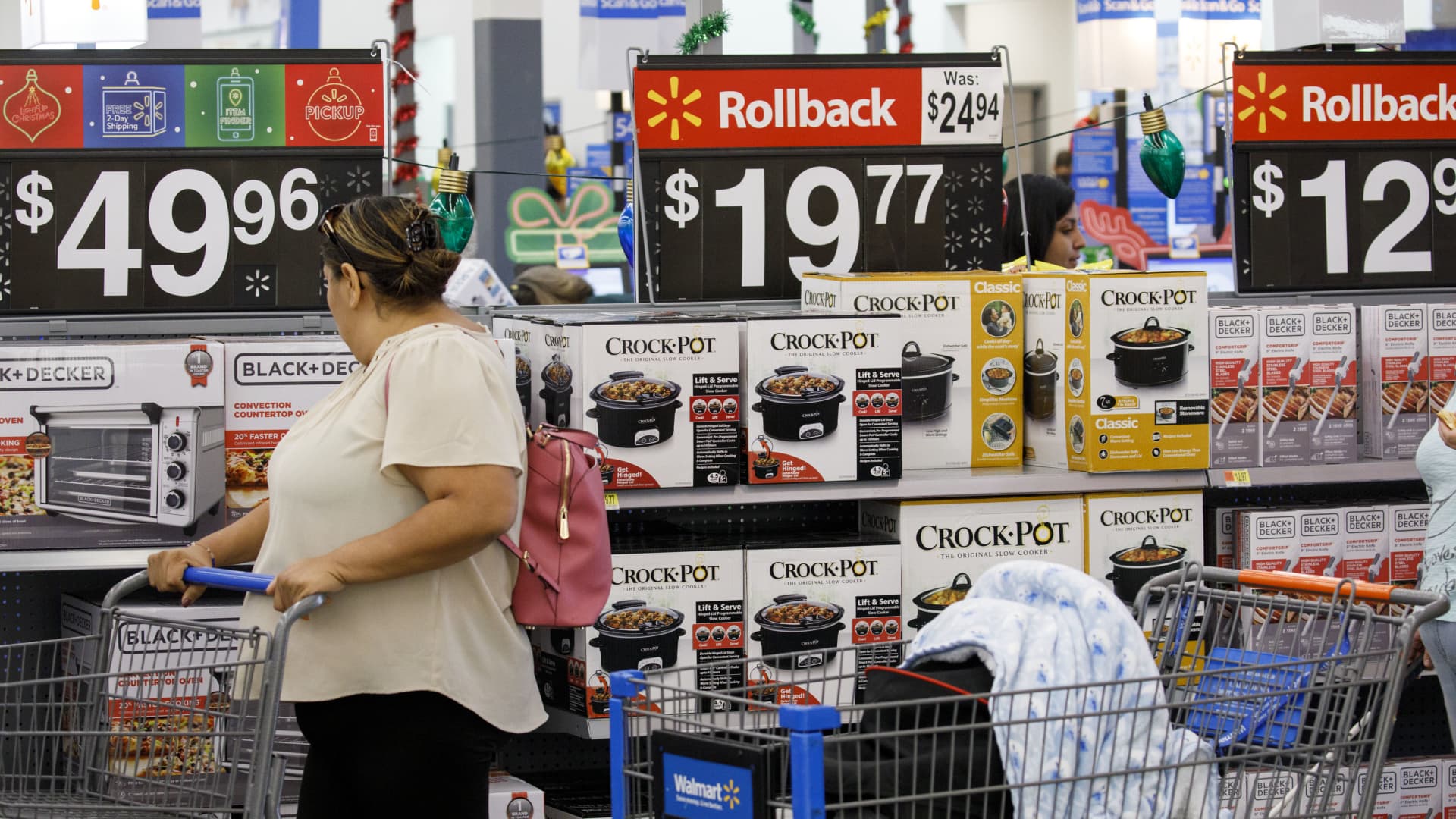Inflation increased 0.4% in September, more than expected despite rate hikes

Prices consumers pay for a wide variety of goods and services rose more than expected in September as inflation pressures continued to weigh on the U.S. economy.
The consumer price index increased 0.4% for the month, more than the 0.3% Dow Jones estimate, according to the Bureau of Labor Statistics. On a 12-month basis, so-called headline inflation was up 8.2%, off its peak around 9% in June but still hovering near the highest levels since the early 1980s.
Excluding volatile food and energy prices, core CPI accelerated 0.6% against the Dow Jones estimate for a 0.4% increase. Core inflation was up 6.6% from a year ago, the biggest 12-month gain since August 1982.
The report rattled financial markets, with stock market futures plunging and Treasury yields moving up as traders priced in likely more aggressive interest rate hikes ahead from the Federal Reserve.
“The Federal Reserve has made it very clear they’re committed to price stability, they’re committed to reducing the inflationary pressures,” said Michelle Meyer, chief U.S. economist at the Mastercard Economics Institute. “The more inflation comes in above expectations, the more they’re going to have to prove that commitment, which means higher interest rates and cooling in the underlying economy.”
Another large jump in food prices boosted the headline number. The food index rose 0.8% for the month, the same as August, and was up 11.2% from a year ago.
That increase helped offset a 2.1% decline in energy prices that included a 4.9% drop in gasoline. Energy prices have moved higher in October, with the price of regular gasoline at the pump nearly 20 cents higher than a month ago, according to AAA.
Closely watched shelter costs, which make up about one-third of CPI, rose 0.7% and are up 6.6% from a year ago. Transportation services also showed a big bump, increasing 1.9% on the month and 14.6% on an annual basis. Medical care costs rose 1% in September.
The rising costs meant more bad news for workers, whose average hourly earnings declined 0.1% for the month on an inflation-adjusted basis and are off 3% from a year ago, according to a separate BLS release.
Inflation is rising despite aggressive Federal Reserve efforts to get price increases under control.
The central bank has raised benchmark interest rates 3 full percentage points since March. Thursday’s CPI data likely cements a fourth consecutive 0.75 percentage point hike when the Fed next meets Nov. 1-2, with traders assigning a 98% chance of that move.
The chances of a fifth straight hike three-quarter point hike also are rising, with futures pricing in a 62% probability following the inflation data.
Inflation rose despite pullbacks in some key areas that policymakers are watching.
For instance, used vehicle prices fell 1.1% and apparel posted a 0.3% decline. Egg prices even dropped, off 3.5% for the month though still up 30.5% from a year ago.
However, air fares rose after consecutive monthly declines, rising 0.8% for the month and up 42.9% from a year ago.
How much the higher prices have hurt consumers could be made clearer Friday, when the Commerce Department and Census Bureau release September’s retail sales report. The data, which is not adjusted for inflation, is expected to show a monthly increase of 0.3%, and no change when excluding auto sales.
Meyer, the Mastercard economist, said consumer spending remains solid despite the inflationary pressures.
“Inflation is able to run this hot in part because consumers have had very strong purchasing power,” she said. “Consumers are still spending through these inflation increases, and the challenge therefore is larger for the Fed to effectively be able to rebalance the economy.”
Falling housing prices eventually will work their way through to rents, which will lower the overall inflation numbers, Meyer added.
Consumer spending has held up in part because of leftover stimulus funds from Covid-related spending and a labor market that has been resilient even as the economy has slowed considerably. Nonfarm payrolls rose 263,000 in September and the unemployment rate fell to 3.5%, tied for the lowest since late-1969.
Jobless claims for the week ended Oct. 8 totaled 228,000, an increase of 9,000 from the week before, the Labor Department reported Thursday. That was just slightly ahead of the 225,000 estimate but still an indicator that layoffs are low.









